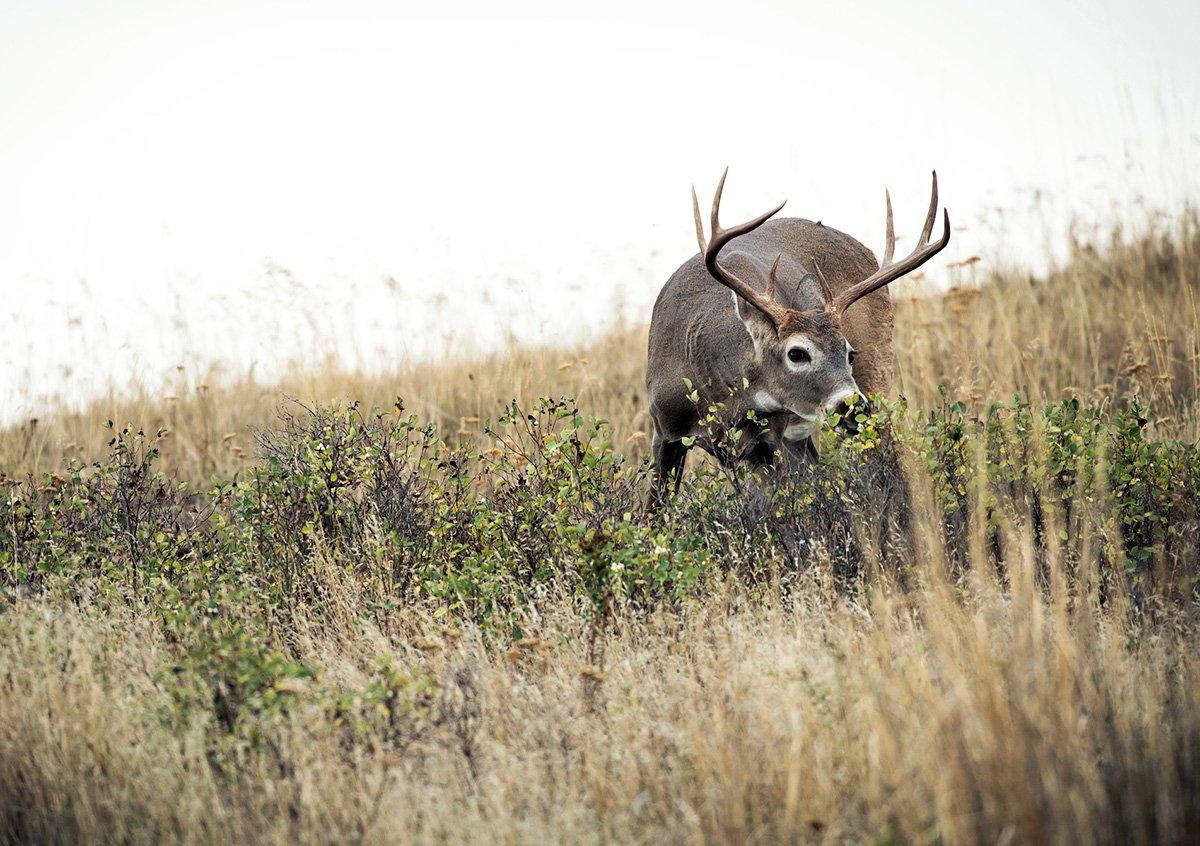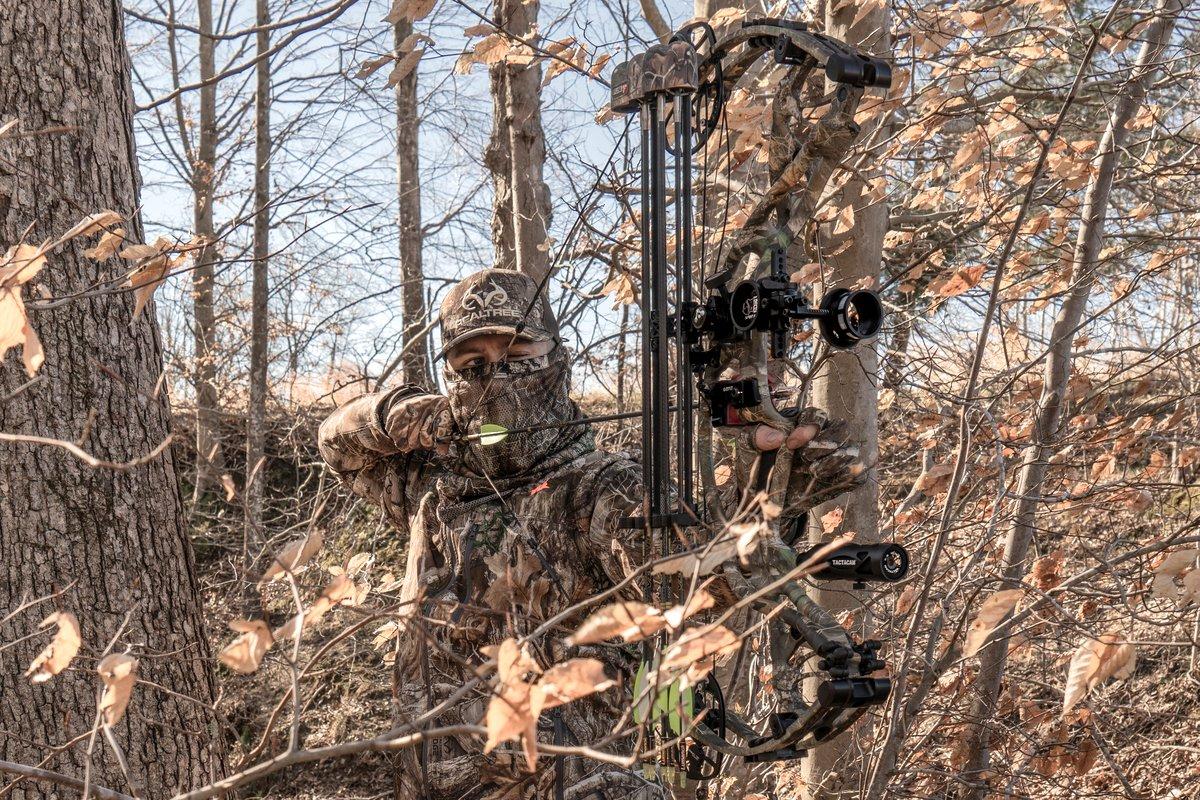Is there a buck chasing that doe? Did your shot hit the mark? A whitetail's white tail can tell you
Whitetails get their name from their behind; specifically, the large, white patch on the underside of the tail. It's used for sending all sorts of messages to other deer — and hunters can decode the messages, too, if they know what to look for.
It's all about the non-verbals when reading whitetails and their behavior. Deer aren't as vocal as turkeys or elk. You must rely on non-vocal communications to see and understand what deer are feeling and thinking.
Quality Deer Management Association (QDMA) Biologist Matt Ross knows what's up with the white flag.
The tail is in their name, Ross said. You could say it serves a pretty important role in communication, both among deer and between deer and other animals. Whitetails primarily use their tail to signal alarm, but there are other nuances related to relaxation, submission and even breeding receptivity. The reason their tail is white on the underside is that, evolutionarily speaking, they've primarily been a forest-dwelling creature, so it allows groups to stay together in flight and signals to other unsuspecting deer and the pursuant that they know what's happening.
1. The Tail Flick
This signal exhibits acknowledgment. Three flicks of the tail means a deer saw or heard something. Keep this in mind when calling, rattling or decoying deer.
Real Life Example: I'd already filled my 2012 Kentucky buck tag. A friend of mine needed a place to hunt, so I offered to take him. We sat in the stand nine mornings in a row before work. On the ninth, a 4-year-old 10-point came busting through cover. I grunted and rattled to him. He stopped, flicked his tail, and kept trucking on down the ridge.
But I knew we had him. knew he heard me even though he never looked our way. It was only a matter of time before he swung back through to confront the challenger. About 45 minutes later, the bruiser came running back to us, stopped broadside at 10 yards, and took a broadhead to the rib cage courtesy of my good buddy.
The Takeaway: Don't give up after calling to a seemingly unresponsive deer. Watch his tail along with the rest of his body to see the big picture.
2. The Tail Tuck
The tail tuck signals a deer that is reluctant, subordinate, fearful or injured. These bucks are oftentimes loners and anti-social. Anytime I see a deer tuck its tail, or receive a trail camera photo of this action, I immediately mark that deer as a timid (or injured) one.
Real Life Example: Having this intel completely changed my approach to hunting a specific buck during the 2009 season. He ran in an area with two larger-bodied bucks, and his actions reflected that. I knew I couldn't get aggressive with him. Instead, I set up shop near a preferred bedding area and refused the urge to call and rattle. I shot him as he made his way to a nearby pond. Because I observed him (in person) act timid once, I completely changed the game plan to fit his personality.
The Takeaway: Tucked tails can mean different things, but they're an insight into a deer's state of mind. Before a shot, a tucked tail means a timid or shy deer. After the shot, it means you likely hit the mark. A wounded deer often tucks its tail between its legs. If you miss, the tail usually stays raised after the shot.
3. The Rigid Tail
A doe's straight, flat tail is a sign love is in the air during the rut. It can mean a doe is in or nearing estrous, and ready to breed. Most times when you see this, the doe is accompanied by a buck (or bucks).
Real Life Example: Several years ago, I was set up on the edge of a thicket. A doe ran through about an hour into the hunt, and her tail was stretched out parallel to the ground. Her mouth was wide open and panting. I knew she was in estrous and that a buck couldn't be far behind her. Ten seconds later, a solid 130-inch 10-point came trotting out. I stopped him before taking the shot.
The Takeaway: Knowing she was in estrous gave me an advantage. I was prepared and waiting to take the shot when the buck entered the open. If I hadn't known, I might not have gotten the shot off in time.
4. The White Flag
The raised tail is without a doubt the most infamous and hated tail talk of all. It's generally the last thing you see as that giant buck bounds over the hill and out of your life.
Real Life Example: I have too many stories about spooked deer to share them all here. I'll pick the most heartbreaking. It was fall of 2013, sometime around late September. I'd been after a particular buck for three years, and on that day he stepped out two full hours before dark. He walked straight toward me and stopped at 30 yards. Then, a woman and her kids walked down the hill to the creek. The field was full of deer, and my buck and all the others raised their tails and dashed out of sight.
The Takeaway: There isn't much you can do when this happens. You're at the mercy of your environment, including trespassers. The best thing to do, even when you mess up and spook deer, is learn from the experience and keep hunting. Set a conscious goal to never see the white flag, and you'll spook fewer deer.
5. The All-Clear Swish
A deer that wags its tail once from side to side to say all is well. It feels there is no imminent danger. If a deer initially spooks, but then signals the all-clear swish, you can relax again and continue the hunt.
Real Life Example: This happened right before I tagged a buck in 2016. A squirrel startled the three deer in the food plot. A few tense moments passed, then each of them swished their tails and settled down. I drew my Hoyt bow and took the shot after they relaxed.
The Takeaway: Don't take a low-odds, bad shot opportunity when deer spook. Wait for them to calm back down. If hunting in the open, they'll oftentimes come back out if they clear the area over a false alarm.
Don't Miss: Can You Talk Deer?
In Action: See how observing whitetail body language can help know when to take the shot.
Bonus: Non-Tail Body Language Signals to Recognize
Bloodshot eyes roll back in their sockets. Chipped hooves kick dust into the air. Coarse hairs stand on end as a parched tongue licks quivering nostrils. There are other key body language movements to know. Here are a few.
The head bob: When alerted, deer often drop their heads and act as if they're feeding, and then immediately rise back up to catch movement. Some say they're trying to trick you into moving. Others claim their poor depth perception is piecing together the picture from different angles.
The leg lift: This is a sign the deer is uneasy. They aren't all-out spooked, but aren't quite sure of what is going on, either.
The hair raise: Deer raise the hair on their back and neck to increase body size and appearance. This is an aggressive, but subtle, sign in most cases.
The pinned ear: This is another sign of aggression. It's less subtle than raised hairs, but it's still commonly misunderstood by hunters. Don't hesitate to call to an aggressive deer.
Strive to be fluent in whitetail body language. The more you know how they communicate, the more apt you are to understand them. And the more you understand them, the more likely you'll be to fill that deer tag.
Don't Miss: 5 Things You Don't Know About Deer Senses
Check out more stories, videos and educational how-to's on deer hunting.









